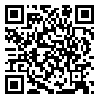BibTeX | RIS | EndNote | Medlars | ProCite | Reference Manager | RefWorks
Send citation to:
URL: http://jdm.tums.ac.ir/article-1-134-en.html
Background and Aim: The objective of this study was to measure and compare the tissue absorbed dose in thyroid gland, salivary glands, eye and skin in maxillofacial imaging with panoramic, conventional linear tomography, cone beam computed tomography (CBCT) and computed tomography (CT).
Materials and Methods: Thermoluminescent dosimeters (TLD) were implanted in 14 sites of RANDO phantom to measure average tissue absorbed dose in thyroid gland, parotid glands, submandibular glands, sublingual gland, lenses and buccal skin. The Promax (PLANMECA, Helsinki, Finland) unit was selected for Panoramic, conventional linear tomography and cone beam computed tomography examinations and spiral Hispeed/Fxi (General Electric,USA) was selected for CT examination. The average tissue absorbed doses were used for the calculation of the equivalent and effective doses in each organ.
Results: The average absorbed dose for Panoramic ranged from 0.038 mGY (Buccal skin) to 0.308 mGY (submandibular gland), linear tomography ranged from 0.048 mGY (Lens) to 0.510 mGY (submandibular gland),CBCT ranged from 0.322 mGY (thyroid glad) to 1.144 mGY (Parotid gland) and in CT ranged from 2.495 mGY (sublingual gland) to 3.424 mGY (submandibular gland). Total effective dose in CBCT is 5 times greater than Panoramic and 4 times greater than linear tomography, and in CT, 30 and 22 times greater than Panoramic and linear tomography, respectively. Total effective dose in CT is 6 times greater than CBCT.
Conclusion: For obtaining 3-dimensional (3D) information in maxillofacial region, CBCT delivers the lower dose than CT, and should be preferred over a medical CT imaging. Furthermore, during maxillofacial imaging, salivary glands receive the highest dose of radiation.
Received: 2009/07/1 | Accepted: 2009/09/14 | Published: 2013/10/1
| Rights and Permissions | |
 |
This work is licensed under a Creative Commons Attribution-NonCommercial 4.0 International License. |




